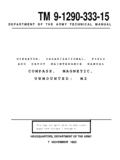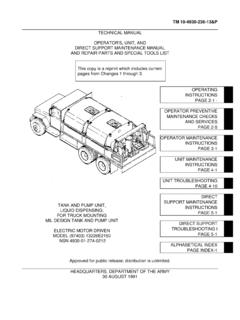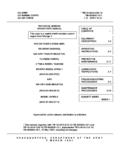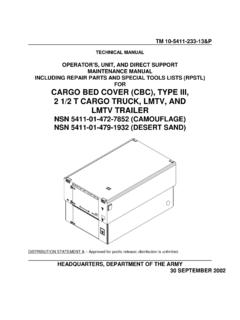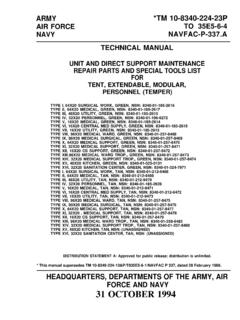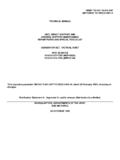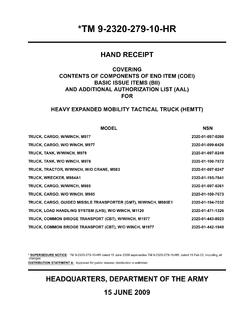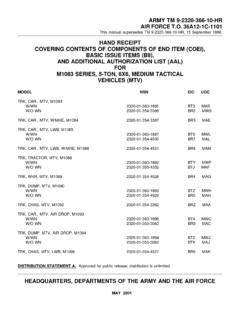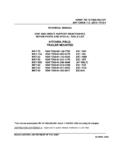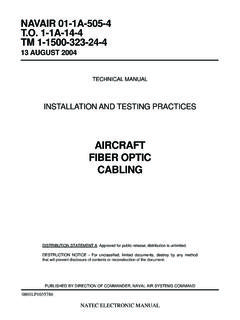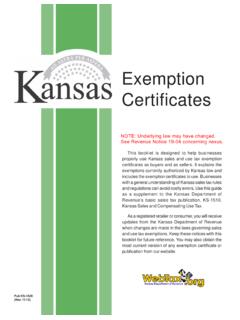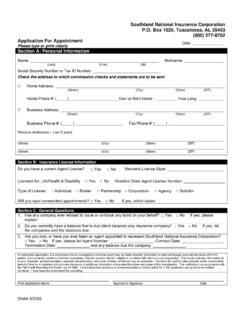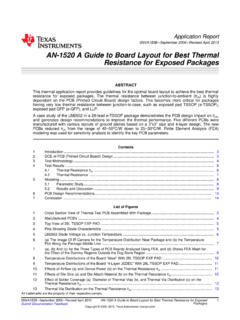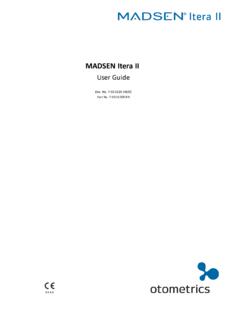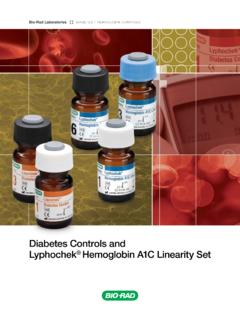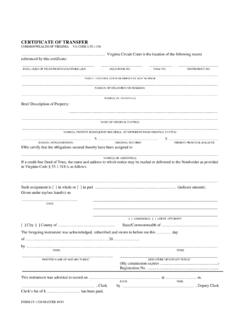Transcription of TM 1-1520-237-23-1 - liberatedmanuals.com
1 AVIATION UNIT AND INTERMEDIATE MAINTENANCE FORARMY MODELS UH-60A, UH-60L,EH-60A, UH-60Q AND HH-60 LHELICOPTERSCHAPTER 1 GENERAL INFORMATIONEQUIPMENT DESCRIPTION AND DATATHEORY OF OPERATIONThis manual dated 17 April 2006, supersedes TM 1-1520-237-23-1 , TM 1-1520-237-23-2, TM 1-1520-237-23-3, TM 1-1520-237-23-4, TM 1-1520-237-23-5, TM 1-1520-237-23-6, TM 1-1520-237-23-7, TM 1-1520-237-23-8, TM 1-1520-237-23-9, TM 1-1520-237-23-10-1, TM 1-1520-237-23-10-2, TM1-1520-237-23-10-3 and TM 1-1520-237-23-11, dated 1 May 2003 including all information is furnished upon the condition that it will not be released to another nation without the specific authority of the Department of theArmy of the United States, that it will be used for military purposes only, that individual or corporate rights originating in the information, whetherpatented or not, will be respected, that the recipient will report promptly to the United States, any known or suspected compromise, and that theinformation will be provided substantially the same degree of security afforded it by the Department of Defense of the United States.
2 Also, regardlessofany other markings on the document, it will not be downgraded or declassified without written approval of the originating United States STATEMENT D- Distribution authorized to the DOD and DOD contractors only due to Critical Technology effective as of 15 June2003. Other requests must be referred to Commander, US Army Aviation and Missile Command, ATTN: SFAE-AV-UH/L, Redstone Arsenal, AL -This document contains technical data whose export is restricted by the Arms Export Control Act (Title 22, , Sec 2751, et. seq.) orthe Export Administration Act of 1979, as amended, Title 50, , App. 2401 et. seq. Violations of these export laws are subject to severe criminalpenalties. Disseminate in accordance with provisions of DoD Directive NOTICE -Destroy by any method that will prevent disclosure of contents or reconstruction of the 1-1520-237-23-1 TECHNICAL MANUALHEADQUARTERS, DEPARTMENT OF THE ARMY17 April 2006 WARNING SUMMARYP ersonnel performing operations, procedures, and practices which are included or implied in this technical manual shallobserve the following warnings.
3 To disregard these warnings and precautionary information can cause serious injury,death, or an aborted AID -refer to FM POWER -before applying ac power to the helicopter, make sure that the area around the stabilator is clear ofpersonnel and equipment. Should the stabilator be in any position other than trailing edge fully down, it may repositionautomatically to fully down when ac power is MONOXIDE -during cold weather operations when preheating is necessary, all personnel shall becomeacquainted with the various types of heaters and where they are to be used. Be careful of accumulations of carbonmonoxide and damage to heat-sensitive MATERIALS -observe all cautions and warnings on the containers when using consumables. Whenapplicable wear necessary protective gear during handling and use. If a consumable is flammable or explosive, MAKESURE consumable and its vapors are kept away from heat, spark, and flame.
4 MAKE SURE helicopter is properlygrounded and firefighting equipment is readily available for PINS -make sure all safety pins are installed in ejector racks prior to performing any maintenance. Todisregard this warning can cause serious injury, death, or an aborted GROUNDING OF THE HELICOPTER -army regulations require the grounding of the helicopter whendoing all fueling and defueling operations. Do not operate helicopter electrical switches, except those essential for servic-ing during fueling and defueling. Do not smoke or use flame during fueling and defueling VOLTAGE -there are dangerous voltages in the helicopter. Use extreme care when working with equipment hav-ing these SYSTEMS -there are dangerous high hydraulic system pressures in the helicopter. Use extreme carewhen working on systems having this OF FIRE EXTINGUISHER -when fire extinguishers are used in a confined area, ventilate immediately.
5 Seriousinjury or death could result if the area is not ventilated or the user does not use a self-contained breathing ROTOR PYLON SLIDING COVER -when opening and closing main pylon sliding cover, keep hands awayfrom sharp edges near track, mating end, and especially ventilation blower inlet ACETONE -technical Acetone is flammable and toxic to eyes, skin, and respiratory tract. Wear protectivegloves and goggles/face shield. Avoid repeated or prolonged contact. Use only in well-ventilated areas (or use approvedrespirator). Keep away from open flames, sparks, hot surfaces or other sources of AQUEOUS CLEANER -alkaline cleaner is harmful to skin and eyes. Use adequate ventilation. Operatorsshould wear protective gloves, aprons, and goggles. Upon contact with cleaning compound, wash affected area for at least20 minutes with clean water. Seek medical COMPOUND SOLVENT -cleaning Compound Solvent is combustible and toxic to eyes, skin, and respira-tory tract.
6 Wear protective gloves and goggles/face shield. Avoid repeated or prolonged contact. Use only in well-ventilated areas (or use approved respirator). Keep away from open flames or other sources of -use electron in well ventilated area only. Avoid prolonged breathing of vapors. Avoid bodily contact. Theuse of chemical gloves and chemical splash goggles are required. Do not use near heat, spark or flame. This solvent isreactive with acids and oxidizers; do not mix or cross-apply with other chemicals. Organic vapor respirator with dust andmist filter is recommended when solvent is spray applied. Keep containers closed between 1-1520-237-1aProvide mechanical ventilation if used in confined spaces. Coordinate the use of this material with your supportingindustrial hygiene and safety offices. Ensure you read and understand the material safety data sheet (MSDS) for electronprior to ALCOHOL -isopropyl alcohol is a volatile and flammable liquid which must be kept away from flameand other ignition sources.
7 It must be used only in well ventilated area. Personnel must wear protective gloves and eyeprotection. Excessive inhalation of vapors or contact with skin must be avoided. If contact occurs with eyes or skin, flusharea thoroughly with water. If ingestion occurs, induce vomiting and call a doctor. Remove to fresh air if overexposed -use in well ventilated area. Avoid breathing vapors. Organic vapor respirator with dust and mist filter is recom-mended. May be harmful by inhalation, ingestion, or skin absorption. Avoid bodily contact. Chemical safety glasses/goggles and chemical resistant gloves are required. Combustible, keep away from heat, spark, or flame. Vapors areheavier than air and may travel over a distance to an ignition source and then flash back. Do not mix or cross apply withother -in critical applications use lockwire instead of safety cable which is specifically prohibited from use incritical applications.
8 The use of safety cable is restricted in these specific applications with a OF A WARNING -alerts personal to operation, procedure, practice, etc., which if not strictly observed,could result in personal injury or loss of BATTERY POWER DURING MAINTENANCE -use battery power as little as possible when maintaining thehelicopter. If the battery charge gets too low the APU will not start when only the battery electrical power is available. Toprevent running down the battery:Make sure BATT switch is ON when ac power (either external power applied, or APU or main generator operating) issupplied to the helicopter. This allows the battery to charge if sure BATT switch is OFF when ac power is not applied to the helicopter and the battery is not being a BATT LOW CHARGE caution indication is obtained while using battery power, immediately set BATT switch WEATHER - BATTERY MAINTENANCE -to prevent damage to the battery, refer to TM SYSTEM -Do not operate the rotor system while the main rotor pylon sliding cover is in the open rotor blades could contact the main rotor pylon sliding cover.
9 If rotor system operation is required when the mainrotor pylon sliding cover is open, remove main rotor pylon sliding SERVO PISTON RODS -Damage to main rotor servo piston rods seal will occur if piston rods come incontact with contaminates during maintenance procedures. Contaminated main rotor servo piston rods will cause sealdamage during use causing excessive leakage past seals. Cover up main rotor servos prior to maintenance work to keeparea CABLE -extreme caution should be exercised when using safety cable on or around movable aircraft flightcontrols components. It is critical that the ferrule does not interfere with or wear against any movable flight OF A CAUTION -alerts personnel to operation, procedure, practice, etc., which, if not strictly observed,could result in damage to or destruction of 1-1520-237-1bNOTEThe inspection requirements herein establish basic criteria for inspecting for damage, cracks, corrosion, etc.
10 When aninspection for cracks is called out, the inspection should be in compliance with procedures in TM 1-1520-265-23 series(Nondestructive Inspection Procedures for H-60 Helicopters Series). If the procedures are not addressed in TM 1-1520-265-23, then use procedures called out in TM 1-1500-335-23 (Nondestructive Inspection Methods)PURPOSE OF A NOTE -applies to operation, procedure, condition, etc., which it is essential to 1-1520-237-1 END OF WORK PACKAGEc/d BlankDates of issue for original and changed pages / work packages are:Original017 April 2006 TOTAL NUMBER OF PAGES FOR FRONT AND REAR MATTER IS 104 AND TOTALNUMBER OF WORK PACKAGES IS 1805 CONSISTING OF THE FOLLOWING:Page / WPNo.* .. 0a - c .. 0d Blank .. 0B Blank .. 0i - lii .. 0WP 0001 00 - 1805 0 Glossary-1 - 0 INDEX-1 - INDEX-44 .. 0TM 1-1520-237-23-1 INSERT LATEST CHANGED PAGES/WORK PACKAGES. DESTROY SUPERSEDED OF EFFECTIVE PAGES/WORK PACKAGES* Zero in this column indicates an original page or work BlankAVIATION UNIT AND INTERMEDIATE MAINTENANCE FORArmy Models UH-60A, UH-60L, EH-60A, UH-60Q, and HH-60L HelicoptersREPORTING ERRORS AND RECOMMENDING can help improve this manual.
